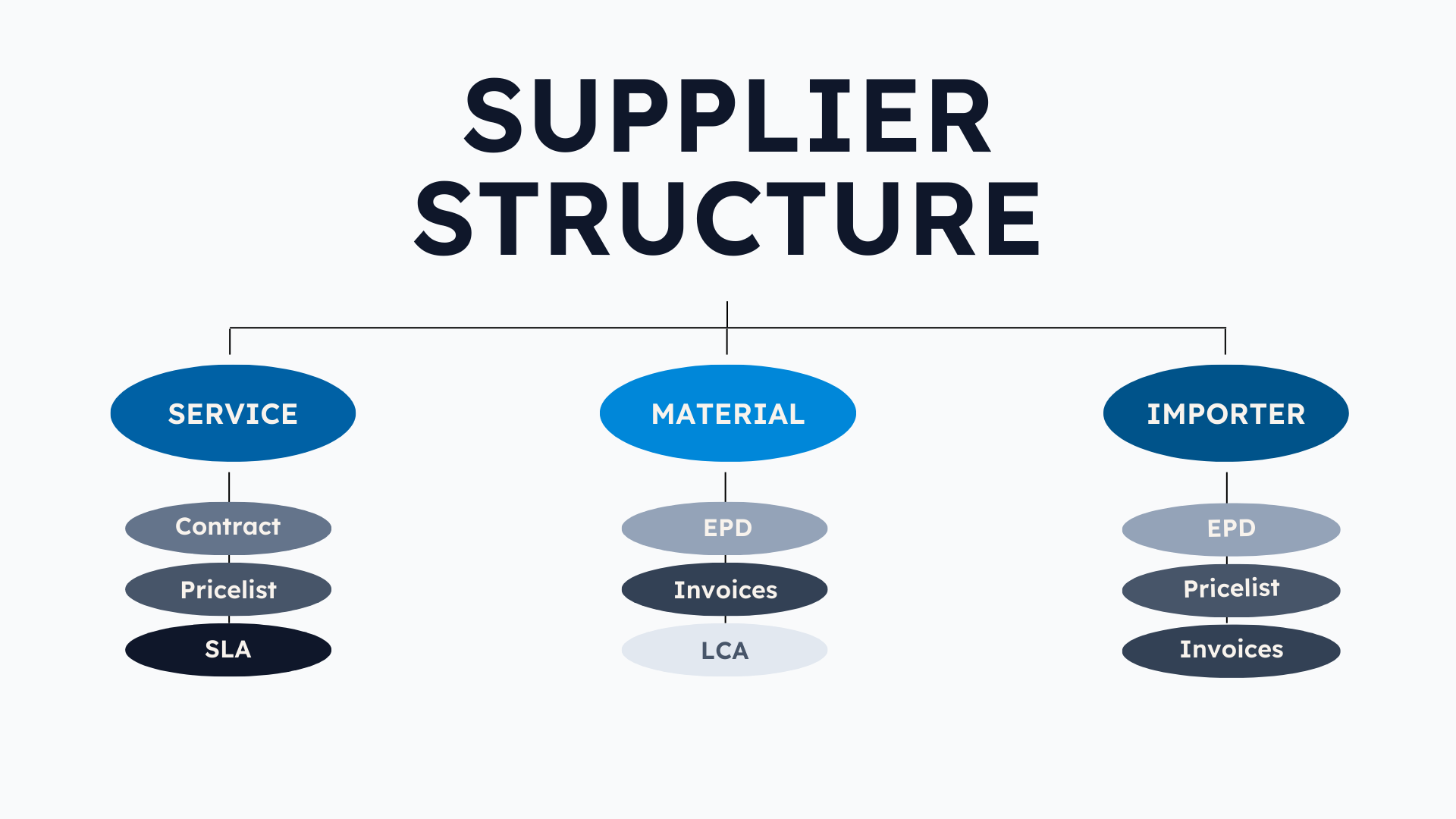Supplier relationship management steps to ease your ESG reporting
Ready to implement and invaluable to your entire business
Anders Dyrholm
If you are working around the clock, always trying to keep up with the endless documentation of your suppliers’ products, materials, systems, and environmental data, you have a lot of responsibilities on your shoulders, but you have also come to the right place. While attempting to juggle all the data and information correctly and effectively, above all, you also want to keep cooperations with the suppliers running smoothly – but fear not, just keep reading.
The Supplier relationship management steps to handle documentation for your ESG reports are as follows:
- Structuring of contact data
- Definition of needed data
- Automatisation of the process
How these supplier relationship management steps will benefit your everyday workflow
There are several supplier relationship management steps that can help you establish a standardised and dependable process which will ensure:
- More efficient ways of working with stakeholders
- Better history data on stakeholder engagement
- A greater structure for environmental documents for ESG reporting
Read on to learn more about these first-class process steps.
Step 1: Structuring supplier contact data
Firstly, categorise suppliers
The first and most important thing you have to do is categorise your suppliers according to which role they play in relation to your company and how you work with them – that way your data will become much more manageable and work way more efficiently.
A relevant grouping could be:
- In terms of services, for example suppliers of electricity, lumber, water, website hosting, transport etc.
- Sub-contractors, so that if you have a trade business, it will be others in trading, and for consultant businesses it can be other consultants, trainers etc. that you might have contacted through an agency.
- Manufacturer materials, that you need to realise your project, for example bricks for a building.
- Domestic distributors, also known as importers, who buy things from overseas or across boarders and work as an intermediary between you and the manufacturer.
Secondly, identify relevant data
Now comes the time where it is important that you define what type of data your organisation needs from all the categories above.
This includes data of all types, such as:
- Documentation of EPD
- Processes for collaboration
- Budget & invoices
- Contact information on relevant internal key people
- The original contract
- Internal safety processes
An example of a supplier structure might look like this:

Step 2: Define your data collection process
With a complete supplier structure in place, it is now time to take a closer look at the processes which will ensure that the necessary data is collected and shared with the right suppliers.
You probably already have ways to manage your supplier demands, but it is essential that these are often reviewed to see if they require any updating for higher efficiency.
You can read about optimising your business processes in general, right here in ”The pro's handbook to creating a process that works”.
Step 3: Automatisation is key
At this point, you have successfully completed:
- A categorisation of your supplier types
- An identification of types of relevant data
- A definition of your data collection and handling procedures
This means that everything is now in place for you to digitalise your professional supplier relationship management strategy. There are numerous options available on the market and you might not know what your next step should be. But there is no need for panic – because of your thorough groundwork with defining your processes, finding a digital platform to meet all your needs is quite straightforward.
Some demands could be:
- Archiving of emails
- A database for structuring an overview of suppliers
- Assigning tasks and projects to specific contacts at your supplier
- Automatised communication workflows – when do you need to reach out to suppliers?
Orbit Online’s platform can do it all and much more. With our Stakeholder Engagement software, your Supplier relationship management steps are professionally automatised and will ease your ESG reporting process tremendously and no doubt benefit your entire business.
Boost your supplier relationship management now!
Successfully managing your supplier relationships has never been easier, because Orbit Online happens to offer a workshop series in cooperation with the cutting-edge company Green Survey. In the first workshop, we will review your suppliers, prioritise them and localise significant data in order to produce an expert process plan. Building on this process plan, the second workshop will focus on following up on the supplier structure in place and adjust it to keep it up to date and forward-looking.
The workshops have been created and are conducted by a sustainability consultant expert from Green Survey, who are specialists in environmental documentation, and an experienced project manager from Orbit Online, who will provide thorough instruction in using the Orbit platform.
Just fill out the form and get started!

Anders Dyrholm
- Phone
- +45 2987 8872
- and@orbit.online